Increasing your odds of beating cancer
By Jan Jarvis
FitSteps for Life at UNTHSCLearn more about how to participate in FitSteps for Life at UNT Health Science Center. |
Four months after undergoing surgery to remove much of his right lung, Phil Moroneso steps on a treadmill and walks at a slow, steady pace.
At 74, the lung cancer survivor does not expect to win any races. Just showing up is enough.
“I’m a firm believer that exercise will increase my longevity and quality of life,” he said. “I have to keep going forward; it’s what helps me stay alive.”
Moroneso hopes that by exercising regularly and eating healthy foods, he will improve his odds of beating cancer. There’s plenty of evidence that he is on the right path.
Everyone benefits from a healthy diet and regular exercise, but it is especially true of cancer patients and survivors whose physical and emotional resources have been taxed, said Dr. Paul Bowen, Chairman and Professor of Pediatrics.
“There is abundant evidence that cancer patients enjoy a better quality of life – more energy and vitality – with a regular structured exercise program,” he said. “There is also growing evidence that even moderate exercise, tailored to the capacity and goals of each individual, may contribute to better disease control and to lengthen survival.”
Physical activity
A 2019 study with several million participants found high levels of physical activity were associated with a 10 percent to 20 percent reduced risk of bladder, breast, colon, endometrial, esophageal adenocarcinoma, renal and gastric cancers, said Nicoletta Bugnariu, PT, PhD, MBA, Vice Provost, Community Engagement & Service. More exercise was associated with a 40 percent to 50 percent reduced risk of mortality in patients with breast, colon or prostate cancers.
“Exercise boosts the immune system, decreases fatigue, depression and therapy side effects,” Dr. Bugnariu said. “It also improves physical function, quality of life and potential survival of patients with cancer.”
A whole-food, plant-based diet rich in colorful fruits and vegetables also has been shown to have a positive impact on reducing inflammation and boosting the immune system, said Debbie Gillespie, Interim Chair and Assistant Professor Lifestyle Health Sciences.
It’s important to consider the quality and quantity of the foods people eat in order to maintain a healthy weight and reduce cancer risk. A suboptimal diet and obesity are controllable risk factors for many types of cancers, she said.
UNT Health Science Center has recognized the link between exercise and diet to cancer treatment by opening the FitSteps for Life program.
Through sponsorship from the Cancer Foundation for Life, Rutledge Cancer Foundation and HSC Foundation, the free program provides supervised exercise sessions for cancer patients and cancer survivors. Partnerships with Cuisine for Healing and Shine Therapy add to the program by offering healthy meals and oncology massages.
Beyond food and exercise, the program offers support for cancer patients and their caregivers not typically found in most gyms. A comradery develops when cancer survivors work out together, Moroneso said.
“At my other gym, I would be walking at a slow pace while the guy next to me was running a four-minute mile,” he said. “Here I feel comfortable surrounded by people who share similar experiences.”
Exercise helps
Dhan Rimal has plenty of reasons to skip the gym, starting with a hysterectomy and chemotherapy.
But the 35-year-old stylist refuses to give in to ovarian cancer.
“I want to be back to normal,” Rimal said. “I want to have a life without always thinking about cancer.”
In 2017, she experienced shortness of breath and coughing, which led to an ovarian cancer diagnosis.
“Exercise had actually helped a lot with my lungs,” she said. “They are not as painful as they used to be.”
She’s determined to exercise every day to build up her strength and stamina.
“I’m starting to feel better, and I believe it’s because of the exercise,” she said.
Rimal has reason to be optimistic.
Evidence that exercise can reduce the reoccurrence of certain cancers is mounting.
In one study, breast cancer patients who did moderate exercise three to five times a week were 50 percent less likely to die than those who did little or no exercise.
Exercise improves stamina and reduces stress.
“We know exercise reduces stress hormones in the body,” Gillespie said. “Those positive endorphins that exercise produces can really help.”
Tony Truong, FitSteps Program Coordinator, sees the difference that movement makes.
“I have had patients on chemo doing intervals of one to two minutes on the treadmill before they needed to rest,” he said. “Six months later, they’re up to 30 minutes of exercise.”
Patients need to feel safe doing exercises specifically chosen to meet their needs, Truong said.
“If a mastectomy patient has limited range of movement, then we focus on ways to strengthen their arms,” he said. “If balance is a problem, we work on fall prevention.”
Safety measures not found in a typical gym, such as blood-pressure and oxygen-level monitoring, also help participants feel more comfortable.
Rimal said she knows exercise makes a difference.
“I do yoga and dance every morning,” she said. “I feel very hopeful.”
Eating healthy
In the refrigerator of FitSteps, there is plenty of soul-warming chicken and veggie noodle soup waiting for cancer survivors to heat up.
The soup is more than a comfort food. It’s chocked full with organic vegetables and other ingredients that boost immunity.
“Everything we cook with is organic all the way down to the spices,” said Lori Henson, Executive Director of Healing Cuisine. “Our food is the cleanest you can find.”
Although no single food can protect against cancer by itself, a diet loaded with seven to 11 servings of vegetables and fruits, high-fiber grain and beans has been shown to be the most beneficial for vibrant health, Gillespie said. Dark greens and cruciferous veggies such as spinach, kale and arugula are known to have cancer-fighting compounds. Red, purple and orange fruits such as raspberries, blueberries and peppers have anti-inflammatory properties, too.
It’s not just what people eat that matters, it’s what they don’t, Gillespie said. By limiting alcohol intake and cutting out processed meats, cakes and saturated fats, they can reduce inflammation and cancer risks.
“The foods we chooses impact our bodies on a cellular level so it’s never too late to choose wisely to change our body chemistry,” Gillespie said. “The goal for a cancer-fighting diet is to flood the body with colorful foods that contain antioxidants, nutrients and phytochemicals that build up the immune system and help protect the body from future damage.”
Relaxing therapy
Claudia Gonzalez could see the exhaustion in her sister’s eyes.
It’s called chemo eyes and it’s a very real thing,” Gonzalez said. “But after a massage, you can see the shine come back.”
Shine Therapy is named for that look of brightness that returns after someone with cancer gets an oncology massage. The non-profit organization provides massages to FitStep participants.
Such massages differ from the relaxing therapy used to work out the kinks and stress of everyday life.
“This is not a deep-tissue massage,” Gonzalez said. “It’s a soothing massage that eases the emotional and physical stress of treatment and recovery.”
Although quantitative data is difficult to find, massage therapy has been shown to reduce pain, nausea, fatigue, anxiety and depression. Massage also reduces the stress hormone levels of patients with blood cancer and boosts the immune system.
Oncology massage therapists are trained to respond to cancer patient’s needs as they recover from cancer.
“For a little while, someone with cancer can leave everything they are worried about behind and just enjoy feeling pampered,” Gonzalez said.
Fighting cancer
Eat right
A cancer-fighting diet is designed to flood the body with colorful foods that contain antioxidants, nutrients and phytochemicals that build up the immune system.
Exercise regularly
A 2019 study found that high levels of physical activity were associated with a 10 percent to 20 percent reduced risk of bladder, breast, colon, endometrial, esophageal adenocarcinoma, renal and gastric cancers.
Therapeutic massage
A soothing massage can ease the emotional and physical stress of cancer treatment and recovery.
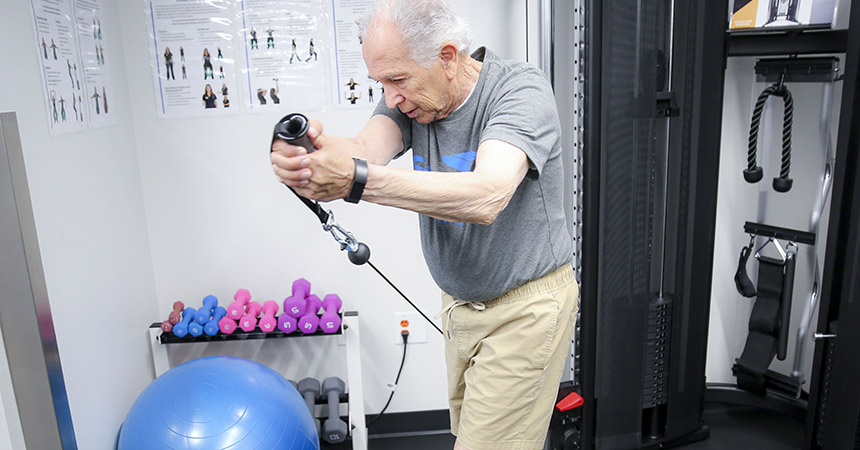
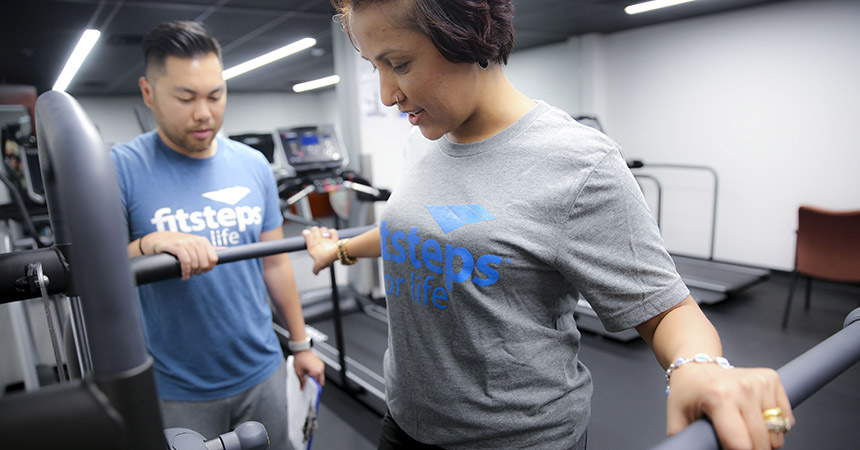
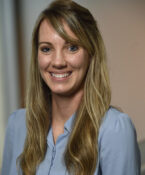
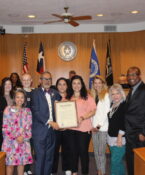

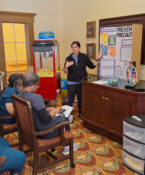

Social media